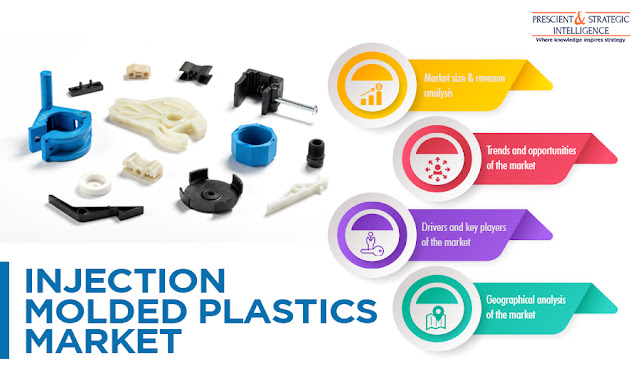Medical Device Sector Using Injection Molded Plastics To Comply with Government Norms
Plastics have become an important part of automobiles, as they are capable of reducing the overall weight of vehicles by a significant margin. Automakers across the world are focusing on the production of lightweight vehicles, as these automobiles help in enhancing fuel efficiency. According to the U.S. Department of Energy, a 10% reduction in vehicle weight can lead to an improvement of 6–8% fuel economy. Thus, the increasing emphasis of automobile manufacturers on enhancing fuel efficiency will fuel the adoption of injection molded plastics in the automotive sector in the foreseeable future.
Moreover, the rising preference for biodegradable polymers among medical device manufacturing companies will drive the injection molded plastics market at a CAGR of 6.0% during the forecast period (2017–2025). According to P&S Intelligence, the market revenue stood at $283.5 billion in 2016, and it is projected to reach $496.2 billion by 2025. The surging consumption of this form of plastic can be attributed to the implementation of stringent regulations by governments regarding the use of eco-friendly medical grade polymers in the healthcare sector.
Additionally, the burgeoning demand for fast-moving consumer goods (FMCG) will also fuel the consumption of injection molded plastics in the upcoming years, due to the increasing use of such plastics in packaging bakery items, vegetables, and frozen food. In addition to the automotive, medical device, and packaging industries, a large quantity of injection molded plastics is used in the construction and electronics industries as well. Thus, the rising number of construction projects and booming demand for consumer electronics will create a huge requirement for such plastics in the immediate future.
At present, manufacturers of injection molded plastics are primarily focusing on geographical expansions and product launches to cater to a wide customer base. For example, in June 2017, Eastman launched Treva, a new bioplastic material in China, to meet the surging demand for these materials from the wide manufacturing base of the country. Treva is used for injection molding and extrusion in electronics, eyeglasses, cosmetic cases, and electronic displays. Furthermore, in September 2017, DowDuPont Inc. established its new plastics and ethylene plant in Freeport to offer feedstock for ethylene, which is a building block of most plastics.
Geographically, Asia-Pacific (APAC) accounted for the largest share in the injection molded plastics market in 2016, and it is expected to retain its dominance throughout the forecast period as well. This can be primarily ascribed to the soaring demand for packaging solutions from the cosmetics and toiletries and food and beverage industries in the region. In the APAC market, China is expected to generate the highest revenue during the forecast period, due to the presence of a large number of automobile and electronics manufacturing facilities in the country.
Thus, the booming demand for lightweight vehicles and FMCG products will fuel the consumption of injection molded plastics in the forthcoming years.



Comments
Post a Comment